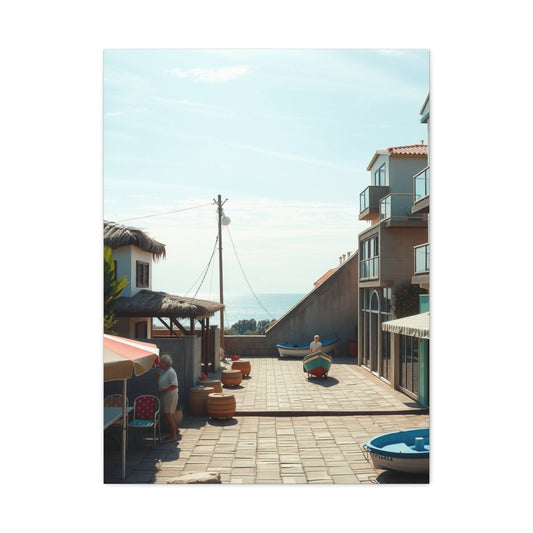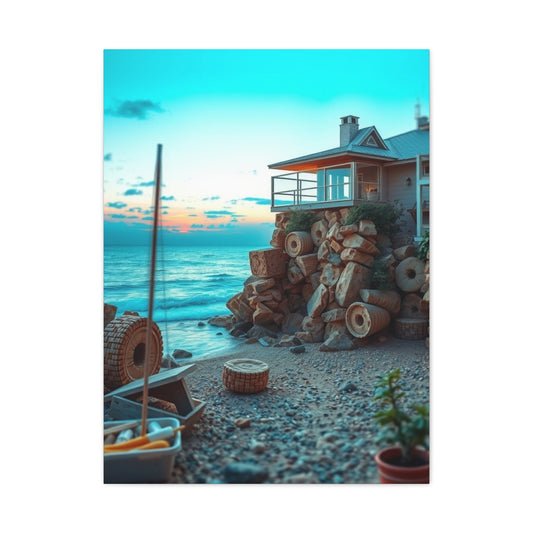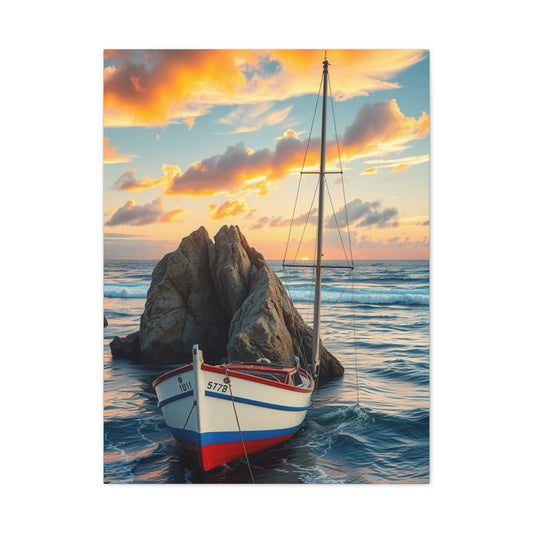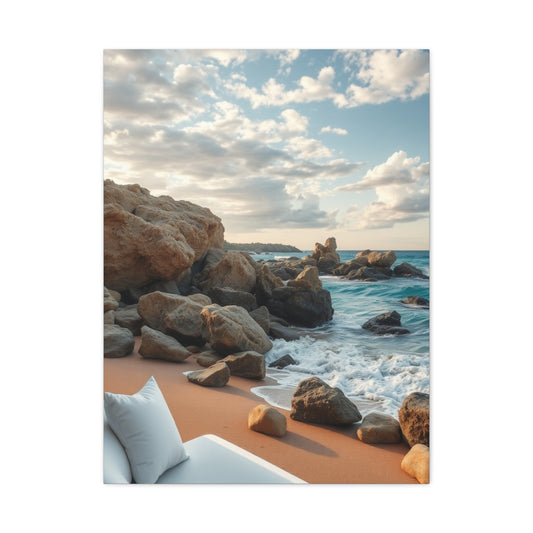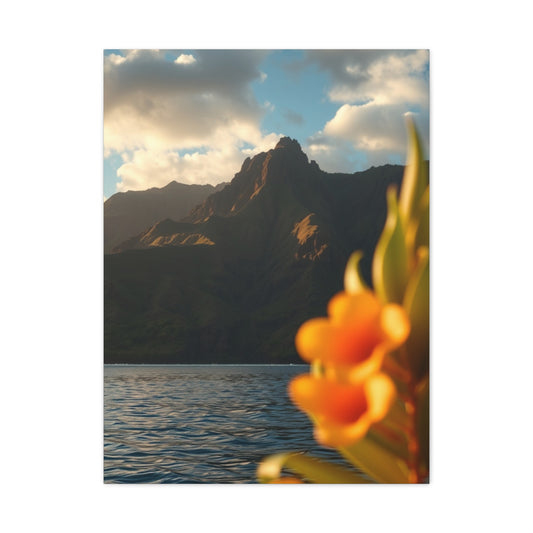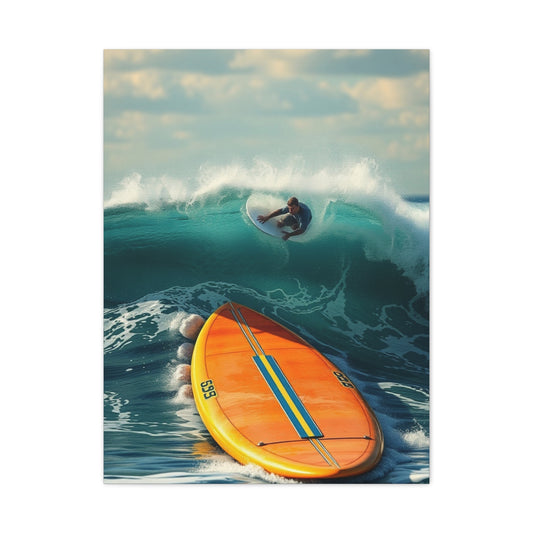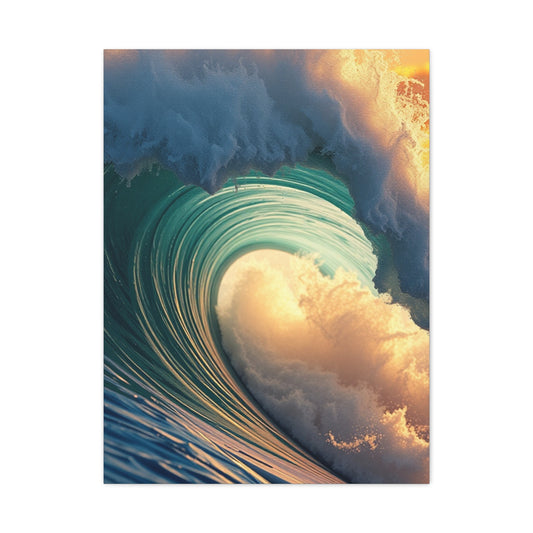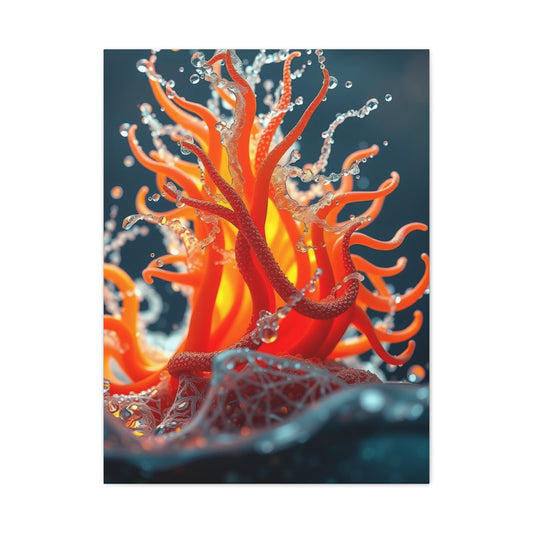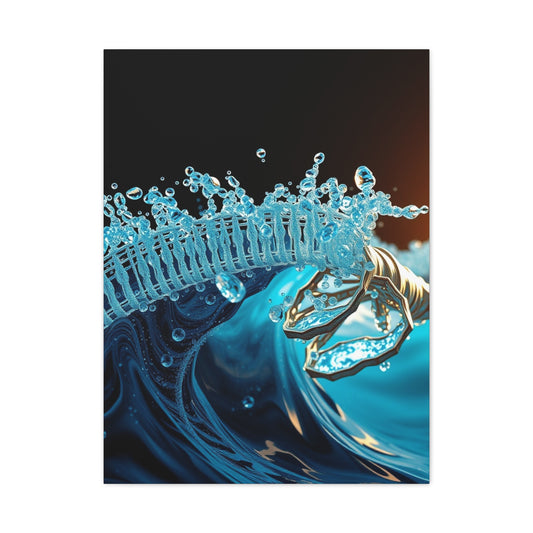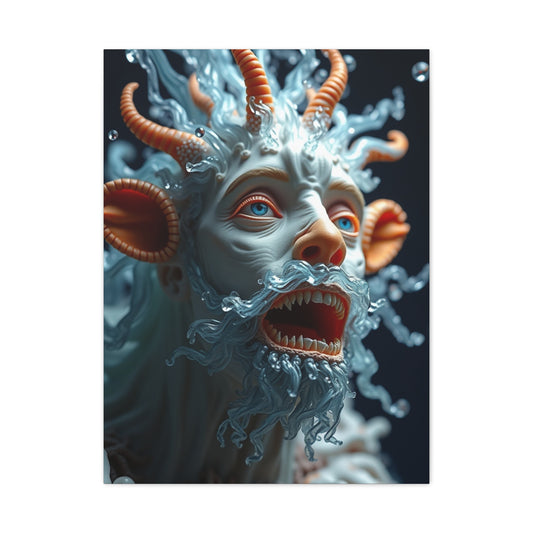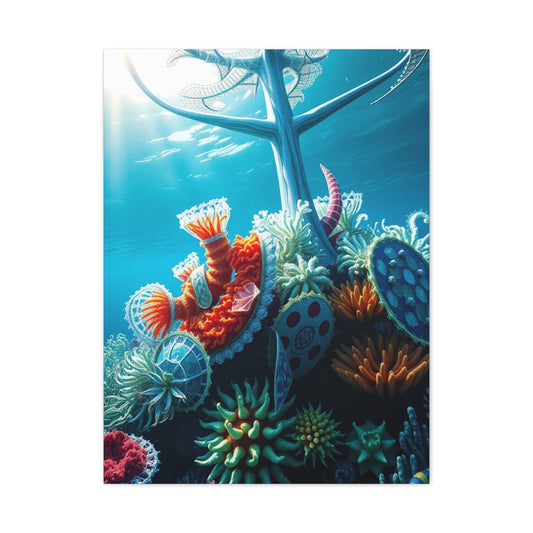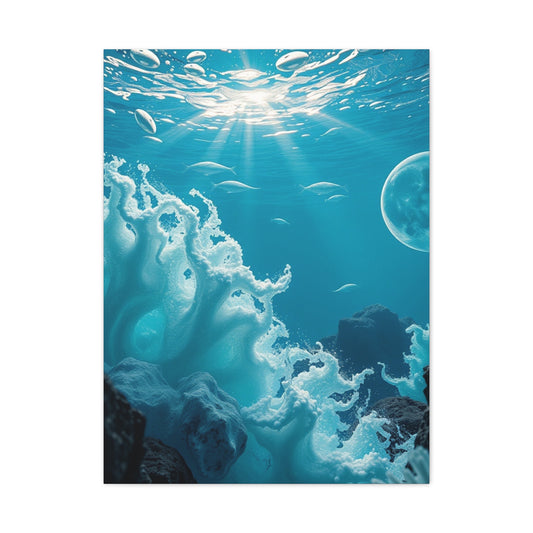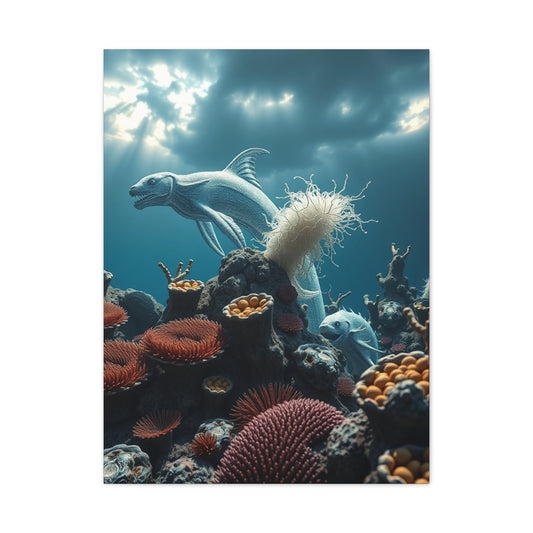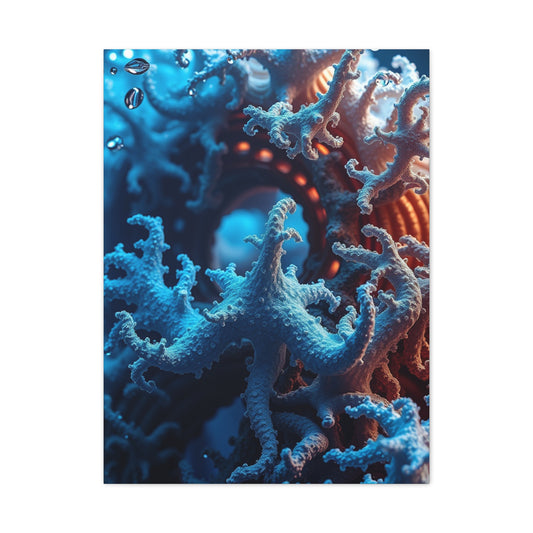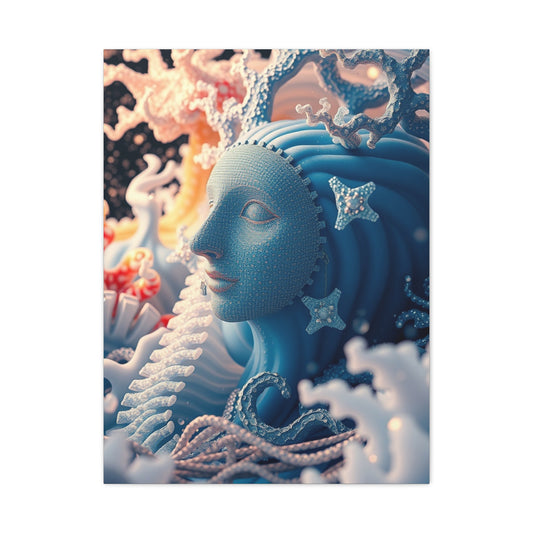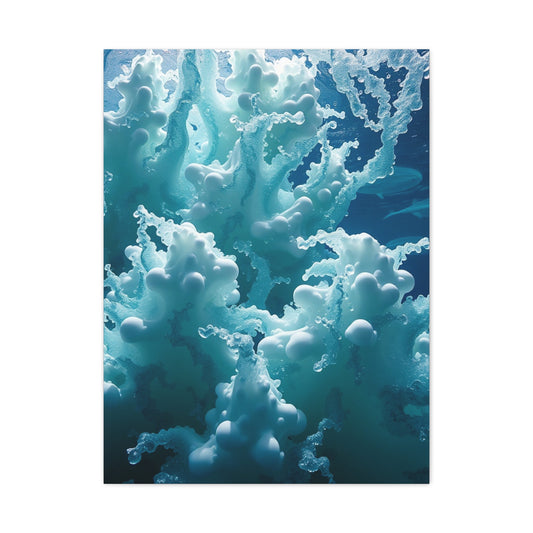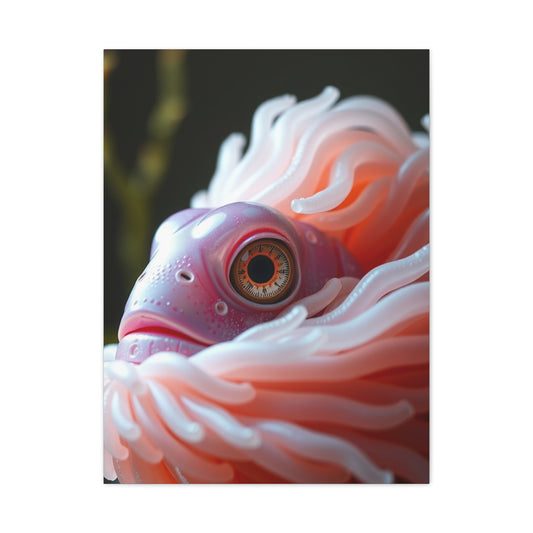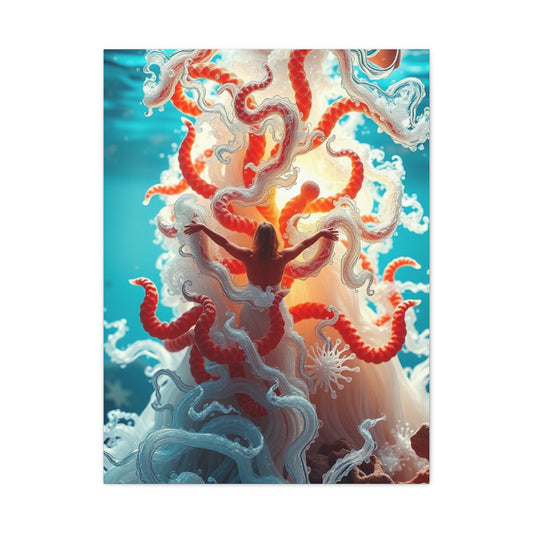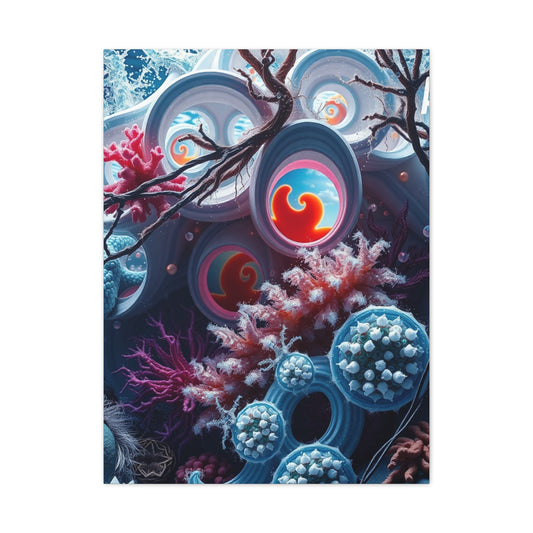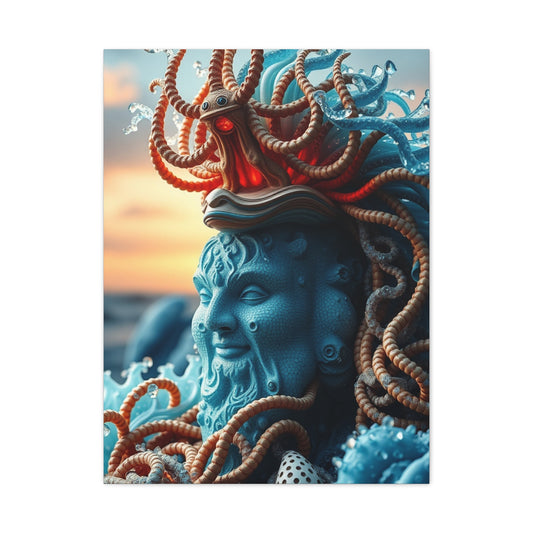Transform Your Home in 1 Minute with Ocean-Inspired Wall Art
When it comes to shaping the character of a room, wall art holds a transformative power. It can convey stories, evoke emotions, and redefine atmospheres without the need for structural changes or heavy investments. Ocean-themed wall art in particular captures the essence of tranquility, exploration, and timeless beauty associated with the sea. For centuries, the ocean has fascinated human imagination, symbolizing both serenity and adventure. Bringing this inspiration into interior design is not merely about decoration but about cultivating a living environment that mirrors the serenity of coastal landscapes. Choosing ocean-themed wall art decor is one of the simplest yet most effective ways to refresh spaces, whether you live in a seaside cottage or an urban apartment far from the shore.
This decorative approach harmonizes natural hues, organic textures, and imagery tied to marine life and coastal landscapes. It transforms plain walls into dynamic canvases where calm waves, nautical motifs, and beach-inspired details work together to create balance. At its core, ocean-themed wall art acts as a bridge between personal expression and environmental influence, making the walls in your home not just structural boundaries but gateways into serene horizons.
Historical Background
The fascination with ocean imagery in art and decoration can be traced back through centuries. Ancient civilizations often depicted marine scenes on pottery, murals, and textiles as symbols of power, sustenance, and mystery. In Greek and Roman cultures, depictions of gods such as Poseidon or Neptune surrounded by dolphins and seashells highlighted the spiritual reverence for the ocean. Coastal tribes also painted ocean motifs to express their dependence on the sea for livelihood and survival.
During the Renaissance period, maritime exploration brought with it a surge of interest in detailed illustrations of marine animals, ships, and seascapes. These works were not only art but also records of discovery, blending science and creativity. Later, in the Romantic era of the 18th and 19th centuries, ocean scenes became symbols of emotion, freedom, and human vulnerability before nature’s vastness. Famous seascapes captured crashing waves and dramatic skies, embedding ocean-themed art into cultural consciousness.
The tradition continued into modern design movements. In the early 20th century, coastal resorts popularized nautical interiors, inspiring decorative styles with maritime symbols such as anchors, compasses, and ship wheels. As leisure travel expanded, beach destinations influenced design trends, leading to widespread appreciation for coastal and nautical aesthetics. Today, ocean-themed wall art remains an enduring style, offering both nostalgia for traditions and fresh interpretations through photography, digital art, and minimalist prints.
Core Concepts and Foundations
At the heart of ocean-themed wall decor lies the principle of blending natural inspiration with artistic representation. The ocean itself is vast, dynamic, and multi-layered, and wall art inspired by it reflects these qualities through imagery, texture, and color. The foundations of this style can be understood through several core concepts:
-
Symbolism of the Sea – The ocean is both tranquil and powerful. It symbolizes depth, freedom, and renewal, making it a fitting theme for home environments where calmness and reflection are desired. Ocean wall art often carries this symbolic weight, reminding viewers of cycles of life, adventure, and serenity.
-
Color Palette Harmony – The foundation of ocean-inspired wall decor rests in its palette. Shades of blue in varying depths, sandy beige, coral hues, and white accents echo the natural elements of sea, sand, and sky. These tones not only create visual cohesion but also influence mood, helping to reduce stress and invite calm.
-
Natural Materials and Textures – Beyond imagery, the tactile dimension of wall art also reflects coastal themes. Frames crafted from driftwood, canvases with rough textures, or mixed media pieces incorporating shells and corals embody the tactile connection to the ocean environment.
-
Balance Between Realism and Abstraction – Ocean-themed wall art spans a spectrum from realistic photography of seascapes to abstract interpretations that capture the movement of waves or the rhythm of tides. This flexibility allows personalization, as some may prefer vivid depictions of marine life, while others resonate with impressionistic or minimal designs.
-
Connection to Personal Experience – Many who choose this decor style do so not only for its beauty but also for its personal resonance. A photograph of a favorite coastal location, a painting that recalls a beach holiday, or a handmade sign bearing coordinates of a seaside town transforms art into memory, making the decor deeply personal.
Types and Categories
Ocean-themed wall art is diverse, encompassing a wide range of styles and mediums. Each type offers a unique way to channel the atmosphere of the sea into interior spaces.
Nautical Prints and Paintings
One of the most accessible options, nautical prints capture iconic seaside imagery. These may include sailboats, compasses, lighthouses, or detailed depictions of marine creatures such as dolphins and turtles. Traditional prints framed in whitewashed wood create a classic look, while modern graphic designs bring a fresh twist.
Seascape Photography
High-resolution photography of beaches, cliffs, and waves provides a strikingly realistic connection to the ocean. Large-scale prints of sunrise horizons or stormy seas can serve as statement pieces in living rooms or bedrooms.
Abstract Ocean-Inspired Art
Abstract representations of water currents, tide patterns, and coastal colors allow more interpretive expression. Swirls of blue and white paint or textured canvases that mimic the flow of waves introduce dynamic energy into rooms.
DIY Wooden Signs
Handmade wooden signs featuring beach phrases, nautical coordinates, or wave silhouettes are popular in coastal-themed homes. These signs personalize spaces while highlighting craftsmanship and sustainable materials.
Shell and Coral Displays
Shadow boxes filled with shells, corals, or sea glass collected from personal travels are both decorative and sentimental. Layered displays can even become three-dimensional wall art that adds depth and tactile appeal.
Mosaics and Mixed Media
Some ocean-themed wall art pieces incorporate ceramic, glass, or natural elements into intricate mosaics. These artworks provide a tactile sense of the ocean floor, blending artistry with texture.
Murals and Wall Decals
For bold transformations, murals depicting expansive seascapes or wall decals with wave patterns can immerse entire rooms in the ocean aesthetic. These larger pieces turn walls into panoramic views, erasing boundaries between indoors and outdoors.
Practical Applications
Incorporating ocean-themed wall art goes beyond simple decoration. It involves thoughtful integration into existing design schemes, balancing proportion, placement, and cohesion with furniture and lighting.
Creating Focal Points
A large seascape canvas placed above a sofa or bed establishes a focal point that anchors the entire room. Similarly, a gallery wall with multiple smaller prints arranged in fluid patterns can simulate the rhythm of waves.
Blending with Color Schemes
Ocean-inspired art thrives when paired with complementary room colors. Soft blues and sandy beiges on the walls or furniture amplify the calming effect, while white trim and natural wood enhance contrast.
Enhancing Small Spaces
For apartments or smaller rooms, ocean-themed art offers a way to expand perception. Light colored photography of open beaches creates an illusion of space, while mirrors framed with coastal motifs reflect both light and imagery, further opening the room.
Personal Touch through DIY Elements
Wooden signs, handmade collages, or framed shell displays allow personalization. These projects transform simple walls into reflections of one’s unique relationship with the ocean.
Integration with Modern Design
In contemporary interiors, abstract ocean-themed art complements minimalist furniture, introducing fluidity without overwhelming. Clean lines and uncluttered spaces allow wave-inspired patterns or marine textures to stand out elegantly.
Seasonal Adaptations
Ocean-themed decor is not limited to summer. In winter months, deeper blue tones and stormy seascape prints add drama, while in spring and summer, lighter beach scenes refresh the ambiance.
Sustainability Considerations
Choosing reclaimed wood frames, recycled paper prints, or ethically sourced shells ensures that ocean-themed decor reflects not just aesthetic inspiration but also ecological responsibility.
Techniques and Methods
Bringing ocean-themed wall art into a living environment is not just about selecting prints or canvases but also about understanding the techniques and methods that enhance the overall aesthetic. The process requires a blend of artistic sensitivity, practical arrangement, and attention to detail. Techniques vary from traditional framing to innovative applications that use modern technology and sustainable practices.
One popular approach involves layering textures. For example, pairing a seascape canvas with a driftwood frame creates a fusion of visual and tactile harmony, bridging natural elements with artistic interpretation. Layering can also mean combining different media in the same display, such as placing a watercolor ocean print alongside a framed piece of pressed seaweed or coral. This method transforms a flat wall into a multi-dimensional narrative.
Another effective technique is thematic zoning. By dedicating one wall of a room to coastal decor, the space gains a focal anchor that avoids overwhelming the entire interior. This zoning may involve large-scale murals or clusters of smaller artworks arranged organically to mimic the undulating flow of waves. Lighting plays a key role in this method; subtle illumination directed at the artwork enhances colors and textures, simulating the shimmering effect of sunlight on water.
Gallery walls remain a timeless method for displaying ocean-inspired pieces. When executed with intentional variation in size, subject, and frame design, they create a sense of rhythm. Arranging nautical art prints in asymmetrical but balanced compositions evokes the fluid movement of tides. This method allows flexibility, as new pieces can be added over time without disrupting harmony.
For those who prefer minimalist expressions, the method of selective placement works well. A single oversized photograph of a quiet beach, hung above a bed or sofa, creates an atmosphere of openness and calm. This approach relies on scale and negative space rather than abundance, allowing the image to dominate the visual field.
Modern techniques also embrace digital innovations. High-definition wall decals, removable wallpaper with oceanic motifs, and even digital canvases that rotate through a series of seascapes introduce dynamic adaptability. Projection art is another innovative method, casting moving images of waves or underwater life onto walls, merging technology with natural inspiration.
Challenges and Common Mistakes
While incorporating ocean-themed wall art is appealing, there are challenges that homeowners and designers frequently encounter. One of the most common mistakes is overloading a room with too many motifs. Seashell patterns on cushions, anchor prints on curtains, and multiple artworks with heavy nautical themes can result in visual clutter. The key lies in balance, where wall art serves as the central focus while other decor elements remain complementary.
Another frequent challenge is scale misjudgment. A tiny art print placed on a large empty wall can feel lost, while an oversized canvas in a small room may overpower the space. Proper proportion is essential to achieving harmony. Measuring wall dimensions before selecting artwork and visualizing placement can help avoid this pitfall.
Color mismatch is also a recurring issue. Ocean-themed wall art typically draws from palettes of blues, whites, and sandy tones, yet pairing these with clashing room colors can disrupt cohesion. For instance, placing a soft pastel seascape in a room dominated by bold reds may dilute the calming effect. Choosing complementary hues ensures the theme integrates seamlessly.
Another mistake involves ignoring the importance of framing. A frame that is too ornate or too stark can distract from the artwork itself. For coastal themes, natural or weathered finishes work best, as they echo the organic qualities of the ocean environment.
Some individuals also struggle with authenticity. Purchasing mass-produced prints without a personal connection can make the decor feel generic rather than meaningful. Incorporating personal touches, such as photographs from seaside travels or handcrafted pieces, adds depth and individuality.
Finally, improper lighting often diminishes the impact of wall art. Without adequate illumination, details and textures are lost. Harsh lighting, on the other hand, can create glare. Soft, diffused lighting angled to highlight artworks achieves a balanced effect.
Trends and Future Outlook
The landscape of ocean-themed wall art continues to evolve, influenced by broader design movements, environmental awareness, and technological innovation. One significant trend is the rising interest in sustainability. As people grow more conscious of ecological preservation, the use of reclaimed wood, recycled canvases, and ethically sourced natural materials has gained popularity. Art that directly references conservation, such as depictions of coral reefs or endangered marine species, not only beautifies interiors but also raises awareness.
Minimalist ocean art is another emerging trend. Clean lines, subtle shades of blue, and simplified wave patterns resonate with contemporary interiors that favor uncluttered spaces. This movement highlights the ability of minimal details to evoke expansive seascapes without overwhelming.
Personalization also continues to shape the future outlook. Custom artworks featuring specific beaches, nautical coordinates, or personal photographs are increasingly sought after. With advancements in digital printing, individuals can transform their own snapshots into high-quality canvases that capture their unique ocean experiences.
Interactive and digital art is likely to play a greater role in the future. Digital screens framed like traditional artworks can cycle through various seascapes, offering ever-changing atmospheres. Some installations even incorporate soundscapes, allowing viewers to hear waves or seagulls, creating a multisensory experience that deepens immersion.
Global influences are expanding the stylistic range of ocean-themed wall decor. Japanese wave motifs, inspired by traditional woodblock prints, or tropical coastal imagery from Pacific islands, bring cross-cultural depth to modern design. This diversification allows homeowners to explore oceanic themes beyond Western interpretations, enriching the narrative of the decor.
Looking ahead, sustainability and innovation will likely converge, with eco-friendly digital art frames, biodegradable materials, and interactive technologies becoming more accessible. The future of ocean-themed wall art is poised to blend timeless natural beauty with cutting-edge creativity.
Expert Insights
Interior designers and art curators often emphasize that the success of ocean-themed wall art lies not only in its aesthetic but also in its emotional resonance. Experts suggest that when selecting pieces, one should consider the atmosphere they wish to cultivate. For bedrooms, soft and muted seascapes promote relaxation, while dynamic wave scenes suit living rooms or offices where energy is desired.
Design specialists highlight the importance of proportion and placement. A renowned designer once noted that wall art should always feel anchored, whether by aligning with furniture edges or balancing within the geometry of the room. Floating artworks without reference points can appear disconnected, while carefully aligned pieces integrate seamlessly.
Curators stress the significance of storytelling. Ocean-themed art is most impactful when it reflects a narrative, whether that be personal memories of a seaside holiday, cultural heritage tied to maritime traditions, or symbolic interpretations of freedom and vastness. This storytelling dimension transforms wall decor from simple visuals into profound expressions of identity.
Art experts also encourage exploration of diverse media. While photography and paintings remain popular, incorporating sculptures, reliefs, or textured installations can enrich the sensory experience. One curator suggested that a room should not only look coastal but also feel coastal, which is achieved through tactile elements like driftwood carvings or coral-inspired textures.
On the topic of sustainability, many experts advocate for conscious choices. Supporting artists who use reclaimed materials or who donate portions of proceeds to ocean conservation projects aligns decor decisions with the values of environmental stewardship. This practice ensures that wall art not only beautifies interiors but also contributes positively to ecological preservation.
From a psychological perspective, specialists underline the calming influence of ocean imagery. Studies show that visual connections to water reduce stress and enhance mental clarity. Incorporating ocean-themed wall art in workspaces can improve focus, while in living areas, it fosters harmony. Experts suggest that this effect is magnified when artworks are combined with natural light and organic textures in the broader decor scheme.
Emerging Trends in Wall Art
Wall art is never static. It evolves continuously in response to cultural shifts, environmental concerns, and advances in technology. Ocean-themed wall art, in particular, reflects these changes in powerful ways. As people increasingly seek calm, balance, and deeper connections with nature in their interiors, new design directions emerge to meet these desires.
One of the strongest currents shaping contemporary decor is the movement toward biophilic design. This approach emphasizes human connection with nature, and ocean-inspired wall art serves as a natural embodiment of this principle. Instead of abstract ornamentation, homeowners are increasingly drawn to artworks that mirror living ecosystems—such as photographic depictions of coral reefs or abstract renderings of water patterns that echo real-life formations. These pieces do not just decorate; they invite nature indoors, offering a visceral link to the wider world.
Another emerging trend involves sustainable artistry. Consumers are more aware than ever of the environmental cost of decor, and this awareness extends to wall art. Pieces created from reclaimed driftwood, recycled paper, or environmentally safe inks are not only visually appealing but also carry a narrative of ethical responsibility. In ocean-themed decor, this trend often manifests as handmade wooden frames, art printed on bamboo fiber paper, or mosaics crafted from repurposed sea glass.
Technological innovation also exerts influence. Digital canvases capable of displaying changing imagery allow for rotating seascapes, tides, or marine life that transform a room’s atmosphere from dawn to dusk. Some designs integrate subtle movement, such as wave simulations or animated light projections, creating immersive experiences that blur the line between traditional art and multimedia. This trend aligns with the growing desire for personalization, as users can curate dynamic galleries that evolve with mood or season.
Cross-cultural influences are another hallmark of contemporary design. Japanese wave motifs inspired by ukiyo-e woodblock prints, Polynesian tribal symbols reflecting oceanic heritage, and Mediterranean seascapes showcasing cobalt blues and terracotta tones all enrich the thematic scope of wall art. These influences expand the visual vocabulary of ocean-themed decor beyond Western interpretations, weaving diverse narratives into domestic spaces.
Minimalism continues to shape modern interiors, and ocean wall art is adapting to this preference. Instead of overcrowded galleries, many homeowners now opt for a single expansive canvas with understated tones. Monochromatic interpretations of the sea—such as shades of indigo against white—reflect restraint yet capture the same depth and tranquility associated with coastal themes. This approach resonates with contemporary lifestyles that value simplicity, clarity, and balance.
On the opposite spectrum, maximalist styles are also gaining traction. Here, ocean-themed wall art is bold, layered, and unapologetically expressive. Murals stretching across entire walls, oversized photographic prints of crashing waves, and textured collages of mixed natural elements create immersive environments where the sea becomes a central character of the room. This trend appeals to individuals who view home design as theatrical and expressive rather than subdued.
As design continues to evolve, one can expect ocean-themed wall art to expand in scope, becoming increasingly interactive, environmentally mindful, and culturally diverse. These trends suggest that the future of wall decor will not simply replicate past styles but will redefine how art shapes the living spaces of tomorrow.
Step-by-Step Guides
Choosing the Right Artwork
The first step in incorporating ocean-themed wall art into a home is identifying the mood one wishes to establish. Begin by considering whether the desired effect is serenity, vibrancy, or dramatic intensity. Soft watercolors of calm shores suit bedrooms or meditation spaces, while dynamic photographs of waves crashing against cliffs might better complement living rooms or offices. Reflecting on personal experiences with the ocean—perhaps a memorable trip to a tropical island or childhood days spent at a local beach—can inspire selecting meaningful pieces.
Once the mood is established, scale becomes the next consideration. Measure the wall space to ensure proportion. For a wide empty wall above a sofa, a large panoramic print creates balance, while smaller alcoves or corridors benefit from clusters of smaller frames arranged harmoniously. Think of the wall as a canvas itself, where placement and proportion dictate the overall impression.
Preparing the Wall and Space
Before installing artwork, preparation ensures longevity and cohesion. Clear the space around the wall to visualize the placement without distractions. Assess lighting conditions: a dimly lit wall may need additional illumination to highlight details, whereas a naturally bright wall might require protective glass with UV filters to preserve the artwork. Consider the background color of the wall as well, since soft neutrals allow marine tones to stand out, while darker walls provide dramatic contrast for lighter prints.
For those who wish to enhance texture, adding a subtle backdrop such as linen wallpaper or a whitewashed wood panel can create a layered setting that enhances the coastal ambiance even before the artwork is mounted.
Arranging and Hanging
Placement is critical for achieving balance. A common guideline is to hang artwork at eye level, typically around 57 to 60 inches from the floor to the center of the piece. When grouping multiple artworks, arrange them on the floor first to experiment with layouts. Organic arrangements often work best for ocean themes, as they mimic the fluidity of tides rather than rigid geometrical patterns.
To achieve cohesion, align artworks either by bottom edges, central axes, or by keeping consistent spacing between frames. Uneven spacing may disrupt rhythm, while measured intervals create harmony. Use frames that echo coastal elements, such as driftwood, bamboo, or lightly distressed finishes, to reinforce the theme.
Personalization through DIY Projects
Handcrafted wall art infuses individuality into decor. One step-by-step approach involves creating wooden signs with beach-inspired phrases or coordinates. Begin with reclaimed wood for authenticity, sand the surface to smooth imperfections, then paint a base in coastal tones such as pale aqua or sandy beige. Stencils can be used to apply lettering, and sealing with protective varnish ensures durability.
Another method is assembling a shell or coral display. Collect natural elements during seaside trips, clean and dry them carefully, and arrange them in shadow boxes or frames. Layering pieces of varying sizes creates depth, while adding background fabric in natural hues enhances contrast. This process transforms personal mementos into enduring wall art.
For those drawn to painting, abstract interpretations of waves can be created with simple acrylic techniques. Use broad strokes of blue and white, blending while still wet to mimic water’s movement. Metallic accents in silver or pearl tones add reflective qualities reminiscent of sunlight on water. Even without formal training, these techniques allow for expressive pieces that hold personal meaning.
Integrating with Broader Decor
The final step involves ensuring the artwork harmonizes with surrounding elements. Complementary textiles, such as cushions with subtle marine patterns or rugs in sandy tones, extend the theme without overwhelming. Incorporating natural textures like woven baskets, jute mats, or linen curtains enhances the coastal effect, making the artwork feel like an organic part of the room rather than an isolated feature.
Lighting further completes the presentation. Install adjustable wall sconces or track lighting angled to highlight the artwork. Warm white light enhances sandy tones, while cooler light emphasizes the blues and greens of the sea. In some cases, candles or lanterns can be used to create flickering reflections reminiscent of coastal evenings.
Through these step-by-step methods, ocean-themed wall art becomes more than decoration; it becomes a curated experience that transforms the everyday environment into a sanctuary infused with maritime tranquility.
Cultural and Emotional Dimensions
The ocean has long carried immense cultural symbolism, inspiring mythology, folklore, and rituals across civilizations. When these narratives are translated into wall art, they imbue interiors with more than visual beauty; they carry timeless meaning. Ocean-themed wall art, therefore, becomes both aesthetic and anthropological, bridging cultural memory with personal space.
In many coastal societies, the ocean is revered as a giver of life. Indigenous communities across the Pacific, for example, often depict waves and marine creatures in symbolic patterns, reflecting their dependence on and reverence for the sea. When such motifs find their way into modern wall art, they carry echoes of ancestral storytelling. Displaying artwork inspired by these traditions not only enhances decor but also becomes a way of honoring cultural wisdom.
Emotional resonance is equally vital. Ocean imagery speaks to universal human emotions—freedom, longing, renewal, and exploration. A painting of a horizon where sky meets sea evokes infinite possibility, while a photograph of gentle waves lapping against the shore can trigger feelings of calm. For some, ocean art recalls personal memories of vacations, adventures, or intimate moments spent by the water. In this sense, wall art transforms into a mnemonic device, holding private narratives within its aesthetic.
Spiritual dimensions also permeate this decor style. The ocean often symbolizes mystery, depth, and the subconscious. Abstract interpretations of water patterns can mirror inner emotional landscapes, offering meditative energy in spaces meant for reflection. In bedrooms, ocean scenes with subdued tones encourage restfulness, while in communal areas, vibrant coastal imagery fosters connection and openness.
By integrating cultural motifs and emotional undertones, ocean-themed wall art becomes more than visual filler. It serves as a vessel of meaning, a silent storyteller shaping how individuals relate to their environment and to their own inner worlds.
Advanced Applications
Ocean-themed wall art is versatile, capable of being adapted into advanced applications that push beyond conventional hanging prints. For those wishing to fully immerse themselves in coastal ambiance, entire walls can be transformed into expansive seascapes through murals or digital projections. These immersive installations replace static decoration with dynamic presence, turning interiors into experiential environments.
Architectural integration is another advanced approach. Built-in wall niches filled with illuminated art pieces, or partitions embedded with resin panels containing seashells and marine motifs, merge structure with decoration. These applications blur the boundary between art and architecture, making ocean inspirations inseparable from the room itself.
Mixed media installations represent another frontier. Artists often incorporate resin, glass, or organic materials like driftwood and sand into their wall pieces, creating tactile surfaces that mirror the textures of the shoreline. Such works introduce an almost sculptural quality, inviting viewers not only to see but also to feel the essence of the sea.
Technology also extends the horizon of application. Digital art frames capable of displaying high-definition underwater photography or animated wave sequences can change depending on the time of day. Integrated soundscapes allow the soft sound of waves to accompany visuals, creating multisensory environments that calm or invigorate.
Another advanced application is thematic layering across spaces. Instead of limiting ocean-inspired art to one room, designers may weave the theme across multiple areas of the home. For instance, a hallway might feature abstract water patterns, the living room might carry a dramatic seascape, and the bedroom might include serene coastal photography. Each space contributes to a continuous narrative that envelops the entire home in maritime ambiance.
Finally, public spaces and hospitality venues are increasingly adopting ocean-themed wall art in advanced forms. Hotels near the coasts commission large-scale artworks to connect guests with their surroundings, while wellness centers use ocean imagery to foster tranquility. These applications demonstrate that ocean decor extends beyond private homes into collective spaces where atmosphere and identity intersect.
Practical Case Studies
Examining practical case studies helps illustrate how ocean-themed wall art adapts to varied settings and intentions. In one coastal residence, the owners chose to install a panoramic mural of the shoreline they frequented as children. This installation was not only decorative but deeply nostalgic, connecting them daily with formative experiences.
In another example, a small apartment in an urban center used ocean art to counterbalance the absence of natural surroundings. A series of minimalist prints depicting waves in muted blue tones transformed a compact living area into a space of calm retreat. By strategically placing mirrors alongside these prints, the room felt more expansive and light-filled, echoing the openness of the sea.
A boutique hotel overlooking a harbor used local artists to create bespoke wall art inspired by regional marine life. Each room featured different pieces—schools of fish, lighthouse silhouettes, or abstract tidal patterns—giving guests both variety and a sense of place. Here, wall art became a narrative device linking design to local culture.
Another case study involved a wellness studio that incorporated interactive digital walls projecting moving waves accompanied by ambient ocean sounds. This multisensory application was specifically chosen to aid meditation and relaxation practices. Visitors reported heightened calmness and emotional release, demonstrating the therapeutic potential of ocean-inspired wall art beyond aesthetics.
These case studies highlight the adaptability of this decor style across contexts, whether personal, urban, commercial, or therapeutic. Each example underscores that the value of ocean-themed wall art lies not only in appearance but in the depth of experience it generates.
Conclusion
Ocean-themed wall art holds a timeless place in the broader world of interior decoration. More than a simple adornment, it is a conduit through which culture, emotion, and memory flow into the domestic sphere. From its historical origins in ancient maritime traditions to its current evolution into digital, sustainable, and interactive forms, this style has continually adapted while retaining its central identity: a tribute to the sea’s endless inspiration.
The techniques and methods for incorporating ocean art are diverse, ranging from gallery walls to immersive projections, from handcrafted wooden signs to abstract paintings. Challenges such as scale, lighting, and cohesion must be carefully considered, but with thoughtful integration, the results are transformative. Trends indicate a future where sustainability, personalization, and multisensory immersion will shape how ocean-inspired decor continues to evolve.
Beyond aesthetics, the cultural and emotional resonance of this style ensures its relevance. It can recall childhood memories, express spiritual dimensions, or celebrate ecological awareness. Ocean-themed wall art invites individuals to surround themselves with imagery that not only pleases the eye but also nurtures the spirit, creating homes that feel like sanctuaries.
In the end, the allure of the sea is universal. Its vastness, rhythm, and mystery have inspired humanity for millennia, and within modern interiors, ocean-themed wall art carries this legacy forward. Whether through a single serene photograph or an expansive mural alive with movement, it transforms walls into windows—windows that open onto horizons of calm, beauty, and boundless imagination.

